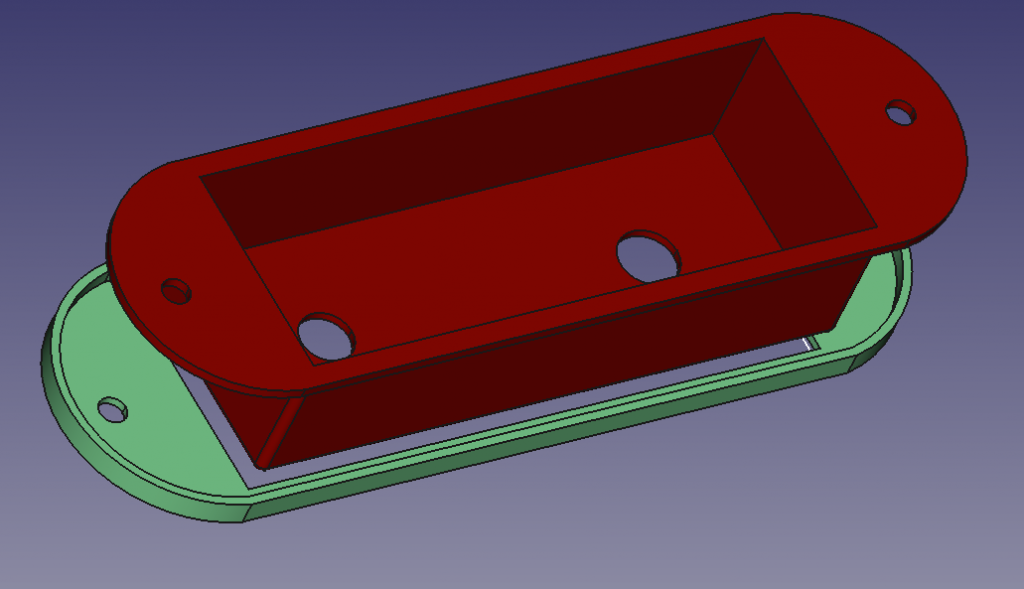Introduction
A week ago I finished my audio cooler. Although I was happy with the result improvements could be made (as is always the case). Most important I didn’t particularly like the console on the side of the coolers lid. This was a 3d printed part of PLA that I glued to cooler with a superglue. This was far from ideal because of the space left between the printed console and the cooler . Another improvement could be made by the way that the speaker was fitted to the lid of the cooler. The speaker was directly attached to cooler with four screws again leaving some space between the two. I already had some FilaFlex filament but hadn’t used it yet. Because of the elastic and flexible properties of Filaflex I figured that I could both fix the issues with the console and the speaker.

Making the console with PLA and Filaflex
I made a design in FreeCAD consisting of two parts, a bottom layer of FilaFlex that embeds the actual console. Furthermore I added two holes for machine screws to both ends of the console. This ensures a better way of attaching the console to the cooler than the superglue that I used previously. Printing the Filaflex part with my Hephestos 2 worked flawless on 235°C. I did use a lower speed than with PLA though (20mm/s instead of 50). The result is much better (see image below), with the console “sitting” on the Filaflex and the better fastening. I also find the result more pleasing to the eye (except for the color but I was out of blue filament).


a Filaflex ring for the speaker
I designed a ring for the speaker again with FreeCAD. I gave the ring some profile so it encompasses the speaker and added three holes for the machine screws to fit through.


Conclusion
I’m glad I had the Filaflex to improve the cooler. Besides the flexibility and elasticity the Filaflex is also very strong. I can apply a considerable force to the ring without tearing or other wise damaging it, so that’s great. Also the combination of the PLA as top layer with Filaflex beneath it works perfectly in case of the console where the PLA part provides the needed rigidness and the Filaflex part seal the opening with the cooler.
